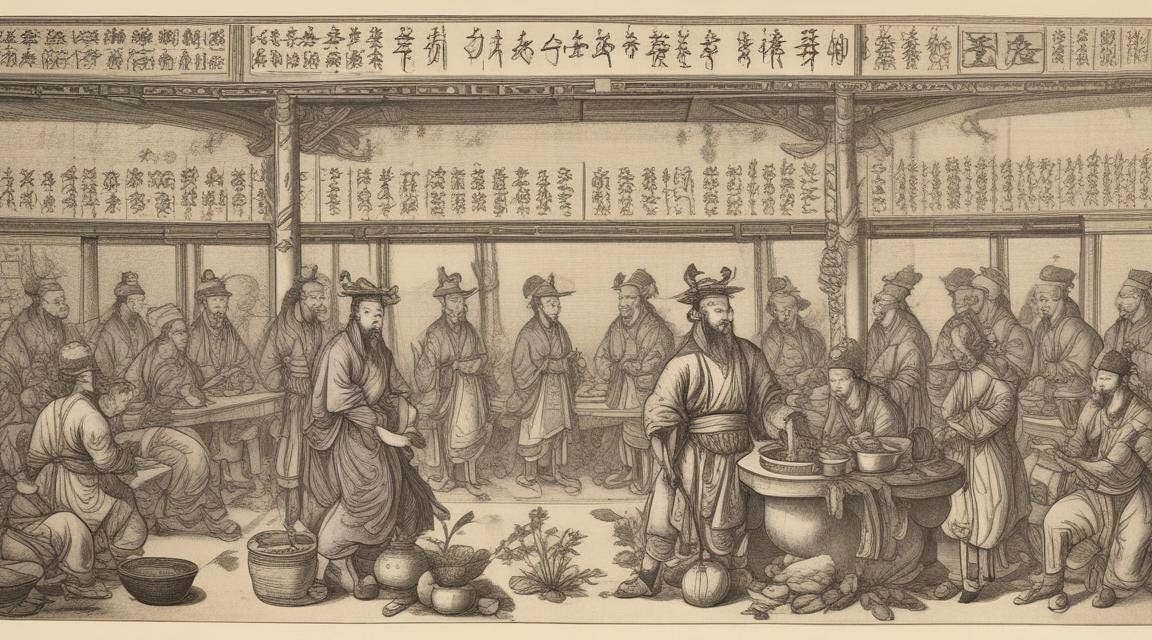Core Principles of Vitalism
As old as Creation, Vitalism is the belief in the omnipresence of the vital force.
No, this is not a religion. Yet it does have a spiritual slant.
It’s a simplified way to view one’s life in the world, our ability to maintain health, heal, or observe the natural phenomena in our midst.
As an herbalist, I apply these principles to how I think about and use herbs. However, these principles are not simply derived from abstract thought processes, they’re derived from observing phenomena and by way of experience.
In order to have a way to formulate ideas and discuss herbs, as well as apply them, we need a common means of discussing them or framing our view.
For many years, I was a Vitalist at heart, but I had not fully embraced Vitalism for lack of confidence in my own observations. Although I was most certainly confident in what I had learned in my profound experiences with plants and the vital force, I still felt an adherence to a reductive model due to my relatively limited training.
It took a great deal of eye-opening (and intuition confirming) over the past 4 years to allow me to more fully embrace Vitalism. But in that process, I’ve had to let go of a lot of the ways that I viewed or discussed herbs.
For example, in my pre-2021 writings, I would have addressed viruses in the conventional sense - a real pathogenic threat - but I would have also addressed the primacy of the vital force. And I would have stood by the motto, host resistance trumps pathogenic virulence. I felt I understood the viral model, and frankly, I did pretty well understand it - as it was presented. But I had not inspected it deeply enough to comprehend the inherent fraud in its genesis.
Anyone out there seen a virus before? Me neither.
But somehow I thought I knew what I was talking about, simply because “smart” professional people wrote about it and I was taking in that information so that I could regurgitate the same thing. My aim was to learn as much as they knew so that I could appear as intelligent. This endless hamster wheel (ie. endless mutations or variances) kept me looking forward and never looking back to the source to uncover the fraud. Thank goodness for 2020 and the likes of Cowan, Kaufman, Baileys, etc.
The study of virology is not the same as, say, learning how to silversmith or how to stitch a pair of leather boots. It’s not even the same thing as debating law or negotiating a real estate transaction (although both of these have their fair share of habitual fraud as well, but those are topics for another time), however abstract those two events may be. But each of them may result in a tangible act - a plea is settled or ownership of a property is conveyed. When it comes to viruses or the so-called science of virology, there is nothing tangible about it at its foundation (other than electron microscopy that is as relevant to the idea of viruses as is an etch-a-sketch).
But as I started to relinquish these old ideas (antiviral, antifungal, antimicrobial, etc) I needed to come up with something else to say to describe these herbs.
Fortunately, I had been working on that since day 1, but I had gotten sidetracked along the way (as has - and still is - the vast majority of the world of Western herbalism) and had left my roots of folk herbalism behind, in some regards.
Coming from me that might sound silly, since I have a lot of ‘dirt time’ under my belt and I’ve spent years of my life learning from plants in the wild and indigenous herbalists and healers, but the truth is that a good deal of my mental real estate was still taken up by the reductionist model. It was, essentially, a means of survival, or so I thought.
So it became more about allowing that which was in the background to now come into the foreground.
Over 20 years ago, I had begun the modest task of classifying the herbs of the Sonoran desert by way of the Chinese cosmology. It was the first holistic model I was exposed to and it was one I certainly resonated with. Sophisticated enough to explain a great deal of complexity in Nature, yet flexible and soft enough to contain a great variety of contradictions while not aiming to be too correct about anything - other than one’s perceptions!
I brought these perceptions to the field and began learning the cosmology from reverse. I let the land teach me, as I believe the progenitors of these systems once experienced for themselves, generations of them!
So one of the primary concepts I learned was continued patient observation.
I was not meant to learn much in a single day or afternoon. I was out to gain a perspective, a thorough snapshot of a place at a particular time and I was charged with opening my receptive faculties to note which plants in the area called to me.
This was the Principle of Receptivity.
I continued to explore and expand this principle in various places, with individual plants, and the plant meditation exercises I developed which open up pathways of connection and understanding between people and plants as well as portals of initiation for those who are ready for it.
As I worked with the individual plants, feeling through the experiences, opening up parts of myself that had been closed off, and learning about the differences and similarities in effects from the different plants (ie. learning their Nature) I worked with, I came to the Principle of Discernment.
Discernment is a crucial aspect of this work as it leads us down the optimal path towards truth. Does one ever reach that point of “truth”? No, I don’t believe so. But since life is not static, but is a continual flow (Principle of the Fluid Dynamic of Nature), then what does it matter?
Through discernment we can parse, for ourselves, what is true or not (what resonates within, or does not) in order to remain on track with our path towards self-realization.
Working with herbs from a Vitalist perspective, we will encounter opportunities where the plants are reflecting back to us who we truly are. This may conflict with the inner narratives we have developed or inherited. This is another crucial area where discernment must be practiced.
Through these experiences a language may be developed. A language and vocabulary that denotes what’s been observed and experienced.
This is the language of so-called plant energetics.
What’s often missing in the discussion of plant energetics is the core Principle of Integrity of the Organism.
This principle assumes the baseline (optimally healthy) state of the organism to be one of optimal integrity. Through the complex, inherent intelligence of the organism, all resources go towards maintaining, or repairing, this integrity whenever compromised.
We can look at this as nutrition and elimination - the dual principle present within each living organism.
Through the proper balance, or harmony, between these dually opposing actions, the integrity of the organism is maintained.
If there was a simple sentence that I could distill down the usage of herbs for the purpose of healing physical ailments, it would be:
The use of herbs helps support optimal nutrition and elimination.
Let’s recap some of the core principles of Vitalism presented above.
Principle of Receptivity
Principle of Discernment
Principle of the Fluid Dynamic of Nature
Principle of Integrity of the Organism
I cannot reference any one source for this concepts and principles, but Mother Nature herself.
These are born out of repetition - that is hearing and witnessing them over and over while working with plants, people & place.
It is clear to me that they interrelate. The act of receptivity enables us to enter into communion with the fluid dynamic of Nature. In this way we become better connected to the inherent flow of information all around us.
By being present in Nature in this way, the integrity of our organism is strengthened. Although we may perceive our progress as moving backwards, we may be experiencing a re-setting of the operational pathways of the organism, or the interrelational aspects of our existence so that we may become available for a higher level of discernment and a higher level of functioning that is in alignment with our truer selves.
I’ve been sitting with this for many years now. It is about the experience. The experience of relating with plants opens us up to optimal opportunities for healing.
Although the plants can be understood and applied according to the biochemical model, that is inherently limited.
Now be sure that the experience itself is not inherently limited, but the approach taken may set one up with inherent limitations. Any time we choose to truly engage with plants or by way of the ingestion of herbal preparations, we open ourselves up to unlimited possibilities.
May you strike out with courage.






This is a great way to view the use of herbs that maybe were seen and used for prevention, and instead we can look at the use of herbs for the most optimal treatment of elimination and nutrition - some herbs might not have a connection to the body and what it needs, it’s up to us to be conscious of that and practice discernment.
🕸️thank you for your insight as always
Thank you!!!! 🙌🌸